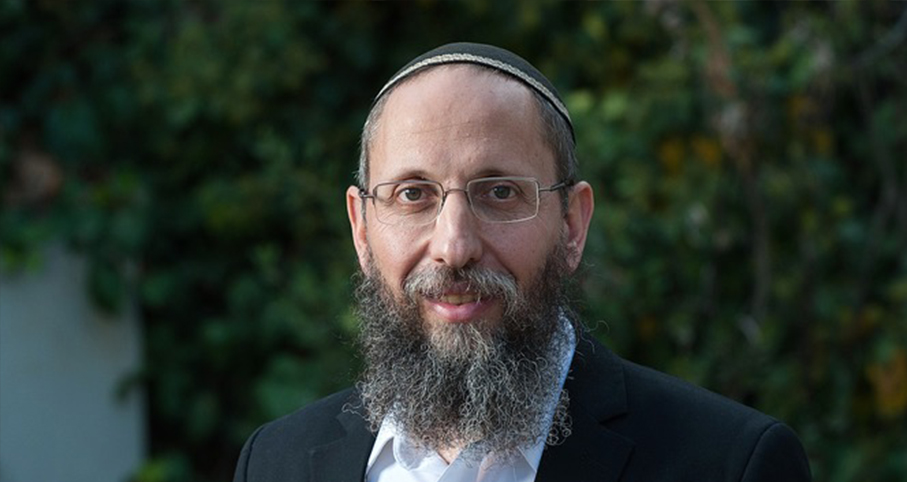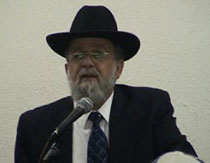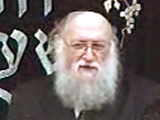Beit Midrash
- Sections
- Chemdat Yamim
- Bemare Habazak - Rabbis Questions
- Shabbat and Holidays
- Hanukkah
- Laws of Hanukkah
Answer: Chanuka candle lighting is tied to specific places to light, primarily a house that relates to the person (Shulchan Aruch, Orach Chayim 671:5-8). There is a precedent for public fulfillment of themitzva, with a beracha – in a beit knesset (ibid. 7). We can gain insight from the discussion of this post-Talmudic practice, which has two parts: Why was it started? What is the justification for making a beracha?
The Beit Yosef (OC 671) cites a few reasons for the minhag. 1) The lighting is due to guests who lack a home to light in, similar toKiddush in shul. 2) That public setting is appropriate for pirsumei nisa(publicizing the miracle). 3) It compensates for the fact that we no longer light outside (i.e., publicly) as was originally instituted (see Rivash 111). In the Shulchan Aruch, he cites pirsumei nisa without further explanation. 4) Some explain that a beit knesset , as a "mini-mikdash," has special significance for commemorating a Beit Hamikdash miracle (see Kolbo 44).
Reasons #1 and #4 are linked to a beit knesset, whereas #2 and #3, which the Shulchan Aruch seems to accept, could arguably be applied to any large gathering (a minyan being a likely minimum - see Bemareh Habazak IV:64, regarding lighting in a shul without a minyan). We have never heard talk of a requirement to light out of the house, nor of real objections to lighting without a beracha. Therefore, the question boils down to whether the case for lighting in a public place is strong enough and/or similar enough to the minhag in a shul to justify aberacha.
The question of how one can make a beracha in shul without a Talmudic source is acute for the Shulchan Aruch who does not allowberachot for post-Talmudic minhagim, e.g., Hallel on Rosh Chodesh (OC 422:2). Rav O. Yosef (Yabia Omer VII, OC 57) presents several ideas. 1) A minhag that extends an existing mitzva receives a beracha(i.e., Hallel on seder night). 2) An important minhag justifies a beracha. 3) A minhag that was instituted by rabbis to strengthen observance has a beracha, whereas a grass-roots minhag does not.

Bemare Habazak - Rabbis Questions (627)
Rabbi Daniel Mann
187 - How Fast Does a Guarantor Have to Pay?
188 - Lighting Chanuka Lights at a Chanuka Party
189 - Taking Off Challa on Shabbat
Load More
Our analysis leads to the following compromise. One of the Kolbo’s (ibid.) reasons for the practice in shul is that it helps those who do not know or do not care enough about the mitzva to do it properly. This is very relevant for a large part of the Jewish community, in Israeland abroad. Not only does involving them in an authentic lighting (i.e.,berachot sung traditionally, albeit not by one’s home) is not only generally important but is specifically in line with the pirsumei nisa that is so prominently part of this mitzva. Therefore, broad public lightings are important, with a beracha. There are both technical (Rav E. Melamed makes one such claim) and educational preferences to having one who does not usually perform mitzvot but respects them perform the lighting (sometimes an inspiring rabbi is a better idea).
In your case, there is little need to light. All light at home; it is a private gathering in a private place (even if you don’t fit in a house). So even if there is a minyan, we do not believe a beracha is justified.

Ask the Rabbi: Giving a Tallit on a Sefer Torah to a Visitor
Rabbi Daniel Mann | Cheshvan 5786

Ask the Rabbi: What May One Do before Havdala after Yom Kippur?
Rabbi Daniel Mann | Tishrei 5786

Ask the Rabbi: Selecting Things to Use Later on Shabbat
Rabbi Daniel Mann | Iyar 5785

Ask the Rabbi: Drawer with Aluminum Foil Roll
Rabbi Daniel Mann | Cheshvan 5786

Rabbi Daniel Mann

Washing Hands with Soap on Yom Kippur
Tishrei 4 5776

Reciting Borei Nefashot on Food When One Will Still Drink
Sivan 3 5780

Cooking for Shabbat at the End of Yom Tov
Iyar 20 5783























